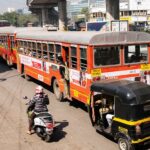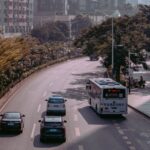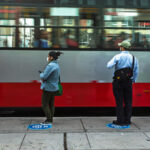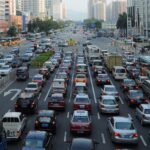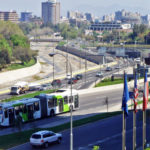Posts tagged with 'Shenzhen'
In cities around the world, people are embracing electric buses, which provide a quieter, smoother ride without the harmful pollution from traditional gas and diesel buses. For example, bus riders in Pune, India, will skip boarding a diesel bus to wait for an electric ...

By midday in Mathare, a densely populated informal settlement in Nairobi, Kenya, the sun beats down on the tight rows of wooden stalls and corrugated metal rooftops. At an elevation of 5,889 feet (1,795 meters), Nairobi has long been known ...

Getting more zero-emission trucks on the road is an important transportation shift that is needed to reduce air pollution, protect public health and curb climate-harming emissions. But transforming the entire trucking industry is a challenging feat that will require the ...

With growing urban populations and increases in cars, trucks and buses, cities are poised to experience more harmful pollution threatening people’s health and livelihoods. But some cities around the world are turning to an emerging solution called zero-emission zones (ZEZs). These are designated ...

Electric vehicle sales have been growing exponentially due to falling costs, improving technology and government support. Globally, 10% of passenger vehicles sold in 2022 were all-electric, according to analysis of data from the International Energy Agency. That’s 10 times more than ...

Today’s city leaders face a level of complexity and rapid pace of change that can be overwhelming. Particularly in developing countries, urbanization is unfolding quickly and often haphazardly. One in three urban residents worldwide lack adequate access to at least ...

The momentum towards low-carbon and sustainable transport is growing globally, but the sector still lags behind many others and each country faces a unique path to travel. Political landscapes, regulations, industry interests, market set-ups, financial resources and social considerations all ...

The circular economy turns linear supply chains into loops so that nothing is wasted. Ideally, there is no more end of the line like a landfill. Practitioners look at all the options across supply chains to use as few resources ...

Urban freight vehicles constitute less than 10% of vehicles on the road in most cities, but they account for a disproportionate amount of transport-related CO2 emissions and pollutants. According to the Beijing Transport Institute, freight in Beijing accounts for around ...

Plummeting bus and train ridership, lost jobs, overflowing warehouses, more inequality: 2020’s disruptions to the transport sector were widespread and deep. Speaking at Transforming Transportation 2021, co-hosted by WRI and the World Bank, sustainable mobility leaders from around the world ...

As people stay home and city streets turn quiet, the COVID-19 pandemic has disrupted the global vehicle market. While many urban experts fear a turn to personal cars in lieu of public transport, few people so far are actually purchasing ...

The COVID-19 crisis has shown that effective public transport is vital to keeping cities running. By serving essential workers in health care, emergency services, food services, and other sectors, public transport has become a service not just for some people ...

Since the landmark Paris Agreement on climate change, adopted in 2015 and signed by 175 countries on Earth Day the following year, global momentum to tackle the climate emergency has been building. Progress has been made on almost every front, ...

The COVID-19 pandemic is laying bare two unavoidable facts about our new reality: we are more interconnected than ever, and cities are at the frontlines of this crisis and will be at the frontlines of any similarly globalized crisis in ...

The electrification of transport has taken off around the globe. Cities and transit agencies are experimenting with the latest trends and innovations, spanning the gamut from cars to buses, scooters and bikes. We have seen China lead on electric vehicles ...
















